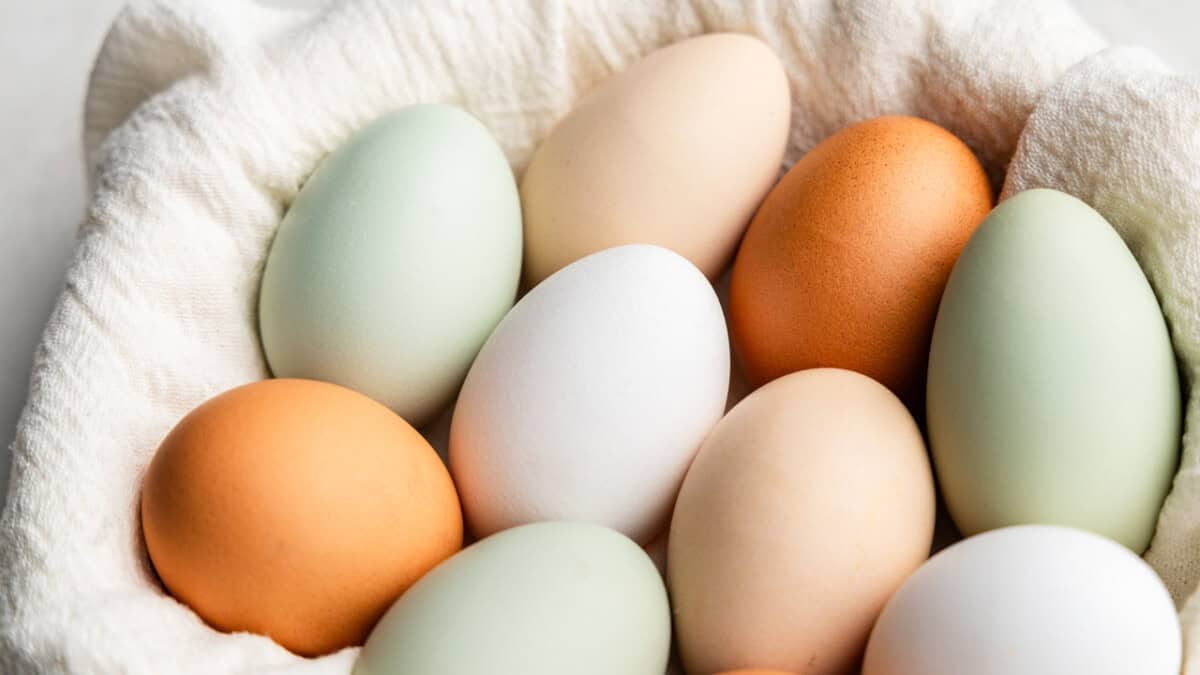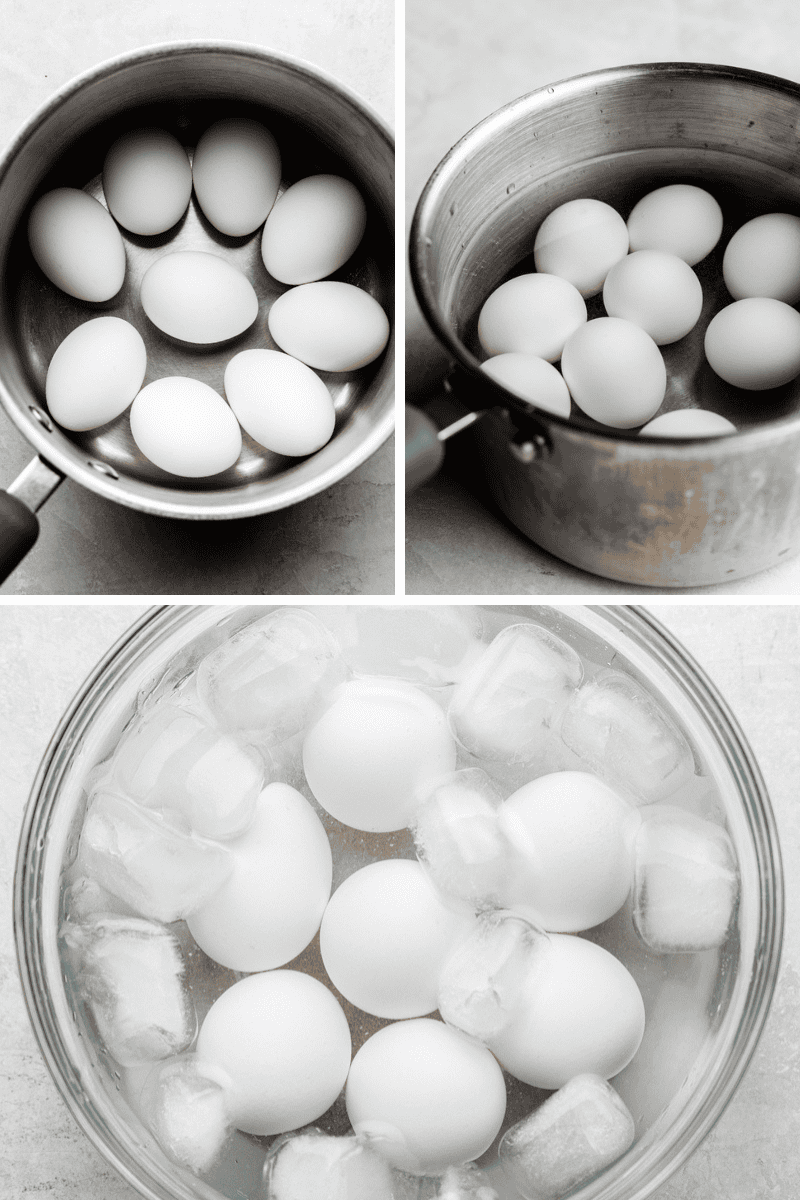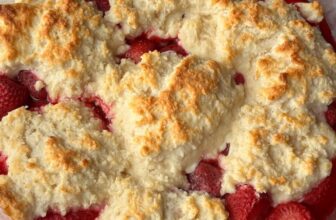This how-to recipe gives you everything you need to know to make the perfect hard-boiled egg. Learn all the tips and tricks with our easy-to-follow steps and troubleshooting guide. If you’re looking to make deviled eggs or want to meal-prep for a quick, high-protein snack, we’ve got you covered.
For more cooking basics, take a look at our How to Make Poached Eggs post.
Why Our Recipe
- Choose between yolk doneness levels for your perfect hard-boiled egg.
- A cold water start gives you the best texture, without cracked shells.
- Science-backed tips for eggs that are easy to peel every time.
If you’re looking to make a bunch of deviled eggs for an event or party, this cooking basics post is your go-to for making the perfect eggs for eating or enjoying in any recipe. We’ve tested just about everything, and we have strong opinions about what it takes to make the perfect hard-boiled egg. Read on to learn all about it.
Cook Times
| 6 minutes | Jammy | Thick, custard-like yolk |
| 8 minutes | Medium-boiled | Slightly firm but creamy center |
| 10 minutes | Fully cooked | Firm yolk with a slight softness in the center |
| 12 minutes | Classic hard-boiled | Completely firm, bright yellow yolk |
Egg Notes

This recipe is based on Grade AA large eggs. If you use smaller or jumbo eggs, you’ll need to adjust the cooking times accordingly. Smaller eggs need 1-2 minutes less and jumbo eggs need 1-2 minutes more.
For the best results, use eggs that are at least 7 to 10 days old. Fresh eggs have a lower pH, which causes the egg whites to bond tightly to the inner membrane, making peeling difficult. As eggs age, their pH naturally increases, weakening this bond and making the shell easier to remove.
The color of your eggs doesn’t matter. The difference in color is simply due to the breed of the chicken. Hens with white feathers and earlobes lay white eggs, while hens with red or brown feathers and darker earlobes lay brown eggs.
Cold Water Start
We use a cold water start rather than adding eggs directly to boiling water. Why? It’s been our experience that starting with cold water provides better temperature control, reduces the risk of cracked shells, and results in a more evenly cooked egg.
Some still swear by adding eggs directly to boiling water, claiming it has the benefit of more precise timing, but it is also more likely to lead to cracked eggs. The sudden temperature change can cause the shells to crack, leading to egg whites leaking into the water. You may also crack some just because it’s harder to handle the eggs and lower them into the boiling water. Cooking eggs at too high a temperature for too long can also lead to rubbery egg whites. Nobody wants that!
This is why a cold water start remains our preferred method for perfect hard-boiled eggs.

Perfectly Peeled Eggs
There are countless tips, tricks, and old wives’ tales about how to make peeling eggs easier. Some suggest adding a teaspoon of baking soda or vinegar to the boiling water, while others swear by poking a small hole in the eggshell before cooking. Some methods recommend cracking the eggs all over before putting them in an ice bath.
In our testing, it seems that sometimes there’s just no winning no matter what you do. Still, here are the science-backed options to help you win the boiled egg lottery:
Use Older Eggs: Fresh eggs have a lower pH, making the membrane stick more tightly to the shell. Eggs that are at least a week old will peel more easily because the pH increases over time, weakening the bond between the membrane and the egg white.
Use an Ice Bath: Immediately shocking cooked eggs in ice water stops the cooking process and helps the shell contract, making it easier to separate from the egg.
Gently Roll Before Peeling: Lightly rolling the egg on the counter to create small cracks makes it easier to remove the shell in little bits and pieces.
Peel Under Running Water: Running water can slip between the shell and membrane, further loosening the shell.
Commercial Secrets
Ever see those bags of perfectly peeled hard-boiled eggs at the store and wonder how in the world they do that in a commercial facility? Well, they use a lot of food science. So here’s how to use two of their best secrets at home.
Secret #1 – Alkaline Bath
Commercial egg processors sometimes use an alkaline bath to increase the pH of the egg white, which weakens the bond between the shell and membrane. Fresh eggs are naturally more acidic (pH around 7.6), making them harder to peel, but alkaline exposure raises the pH to 8.5-9.2, making peeling easier.
To create an alkaline bath at home, dissolve 1 tablespoon of baking soda in 4 cups of water and soak the eggs in this solution for 15-30 minutes before boiling. This pre-treatment increases the egg’s pH, making the shells easier to remove after cooking.
Secret #2 – Precise Cooling
Commercially, eggs are cooled in near-freezing water (32-35°F) immediately after cooking. This sudden temperature drop contracts the egg white slightly, making the membrane less sticky and easier to peel.
To mimic this cooling at home, prepare a large bowl filled with ice water and a handful of salt. The added salt lowers the freezing point, making the water slightly colder than just ice alone. Once the eggs are done cooking, use a slotted spoon or tongs to transfer them directly into the ice bath. Let them sit for at least 10-15 minutes before peeling. Eggs are easiest to peel when they reach 50-52°F.

Troubleshooting
Cracked Eggs: Every once in a while an egg cracks while boiling and may leak some of the interior white and even yolk. The egg is technically still edible as it has been cooked, albeit a slightly different method. Usually, I simply discard these eggs, but the choice is up to you.
The Dreaded Green Ring: Have you ever noticed a green ring around the yolk of your egg after boiling it? Unfortunately, a green yolk means you’ve overcooked your eggs. And you can taste it! Stick to one of the recommended cooking times and never boil longer than 12 minutes.
Induction Cooktop Adjustments
Induction cooktops heat water much faster than gas or electric stoves. We’ve experimented with this one at home a lot. Avoid using “Power Boost” or rapid boil modes, as they cause eggs to bounce and crack. Instead, set the cooktop to medium-high and let the water heat gradually.
Alternative Cooking Methods
There are several ways to cook hard-boiled eggs beyond traditional boiling, each with unique benefits. Steaming and sous vide most closely mimic commercial egg processing for consistently easy-to-peel results while providing better control over doneness.
Steaming is one of the easiest and most reliable methods for getting eggs that are easy to peel. Place eggs in a steamer basket over boiling water, cover, and steam. The cooking time remains the same as our method for traditional hard-boiled eggs.
The Instant Pot is an option that a lot of people swear by for easy-to-peel eggs, but it is really difficult to get precise results and very easy to overcook the eggs. Place eggs on a trivet with 1 cup of water, cook on high pressure for 4 to 5 minutes for classic hard-boiled, then allow a 5-minute natural release before transferring to an ice bath.
If you want to get really fancy, sous vide cooking offers the most precision, allowing you to tailor the eggs exactly to your preferred doneness. For fully hard-boiled eggs, cook them at 170°F (76°C) for 40 minutes.
Storage Instructions
Refrigerate hard-boiled eggs for up to 7 days.
Use your hard-boiled eggs….
Trending Products

GE Electronic Window Air Conditioner 6000 BTU, Efficient Cooling for Smaller Areas Like Bedrooms and Guest Rooms, 6K BTU Window AC Unit with Easy Install Kit, White

Alen BreatheSmart Classic H13 HEPA Air Purifier, Air Purifiers For Home Large Room w/ 1100 SqFt Coverage, Medical-Grade Air Cleaner for Pet Dander & Odor, up to 12 Mos. Filter Life, Espresso

Luminance Midway Eco LED Ceiling Fan with Light and Remote | Dimmable 54 Inch Fixture with DC Motor | Contemporary 5 Blade Design with Downrod Mount for Hanging, Appliance White

Nostalgia RF6RRAQ Retro 6-Can Personal Cooling and Heating Mini Refrigerator with Carry Handle for Home Office, Car, Boat or Dorm Room-Includes AC/DC Power Cords,,1 cubic feet, Aqua











